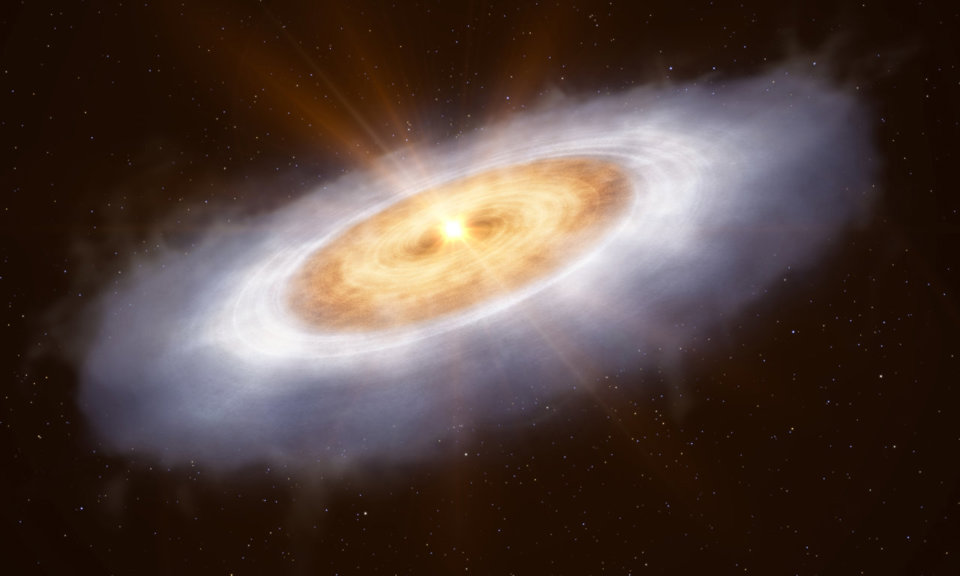
Without a doubt, the most defining characteristic of our planet is the presence of water. If we want to be strictly precise, the presence of water in a liquid state. Without it, life as we know it would be unimaginable; and without it, the future of our species on other hypothetical future habitable worlds would be inconceivable.
In fact, Earth, as far as we know, is the only planet in the solar system where there is a sufficient amount of liquid water to support life. All this series of questions have legitimately made scientists ask themselves a question: Where does the Earth's water come from?
The origin of water on Earth
To answer this question, various hypotheses have been put forward. One of them is that the water of our planet could have been present from the first stages of its formation, about 4,500 million years ago, contained in the same planetesimals that by accretion gave the Earth its final form. Others defend that its origin is somewhat later, placing it at the time when the Earth cooled, releasing the gases -including water- from its interior.
Among other of the most accepted theories, there are those that defend an extraplanetary origin of our planet's water and postulate that a large part of it could have been transported by comets, asteroids or meteorites gravitationally attracted by the Earth for millions of years.
And a last hypothesis defends that the Earth's water could come directly from the protosolar nebula that gave rise to our planetary system.
The missing link of water in the Solar System
The presence of water on Earth could, however, have an origin, not based solely on one of these theories, but, in part, on all of them. If we take the last of the mentioned hypotheses as a starting point, the transfer of water from the nebulae that form the stars to the stellar system itself has already been documented. Also the transport of water from comets to planets. However, it was still unknown how the water could have reached comets from the stars.
The good news is that now, using the ALMA telescope -Atacama Large Millimeter/submillimeter Array- scientists have detected for the first time water in a gaseous state in the planet-forming disk of a star: V883 Orionis.
"We can now trace the origins of water in our solar system before the formation of the Sun"
The researchers have further analyzed its chemical signature, which explains the journey of water from star-forming gas clouds to planets, and supports the idea that water on Earth is even older than our Sun." We can now trace the origins of water in our solar system before the formation of the Sun," says John J. Tobin, an astronomer at the US National Radio Astronomy Observatory and lead author of a study published today in the journal Nature.
The formation of stars and planets, a history passed through water
This discovery was made by studying the composition of water in V883 Orionis, a planet-forming disk located about 1,300 light-years from Earth. When a cloud of gas and dust collapses, it forms a star at its center. Around the star, the cloud material also forms a disk. Over the course of a few million years, the matter in the disk clumps together to form comets, asteroids, and eventually planets.
In the case of V883 Orionis, Tobin explains that "the composition of the water in the disk is very similar to that of comets in our own solar system, which reinforces the idea that water in planetary systems formed thousands of years ago." millions of years, before the Sun, in interstellar space, and has been inherited by both comets and Earth relatively unchanged.
According to research co-author Margot Leemker, a doctoral student at the Leiden Observatory in the Netherlands, until now it had been very difficult to find traces of this water in the protoplanetary disks of stars because due to low temperatures this is usually found in the form of ice.
However, the disk of V883 Orionis is relatively hot due to a burst of energy in its star. This has led to the fact that the water inside is in a gaseous state, and it could have been detected by ALMA.
In fact, thanks to the telescope, scientists found that this disk contains at least 1,200 times the amount of water in all the oceans on Earth. Now the researchers hope to be able to use another telescope, the Extremely Large Telescope -ELT- to find out more about the nature of the water present in these disks, and to better understand the path of water from star-forming clouds to solar systems. (Text and photo: Taken from National Geographic)